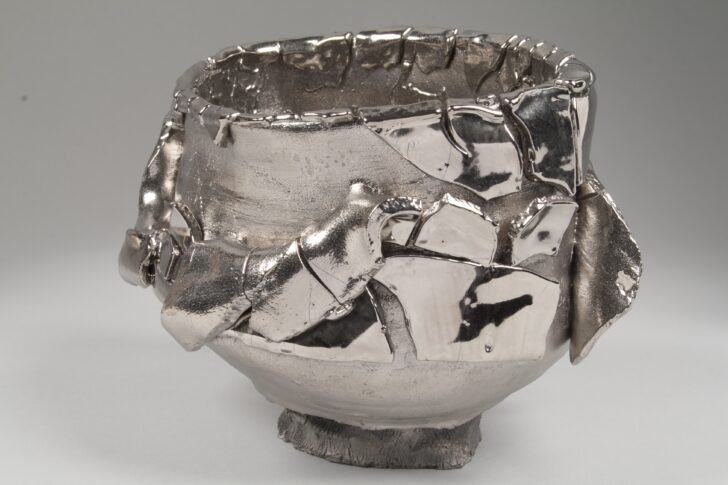Platinum Kairagi Shino Bowl
Takuro Kuwata

Description
Gallery Rotation Spring 2013
Takuro Kuwata
Japan (born 1981)
Platinum kairagi
Shino bowl
Heisei period (1989–present)
2011
Porcelain, platinum slip, and paint
Museum purchase, 2012/2.7
Takuro Kuwata is one of an emerging group of young Japanese artists using materials and idioms historically associated with the Japanese craft traditions—ceramics, woodwork, textiles, and metalwork—to challenge conventional notions of craft. In this striking ceramic bowl he adapts the technique of Momoyama period (1583–1615) Shino ware called kairagi, in which an uneven, porous surface is created through the crackle effect of thick glaze. Kuwata has boldly exaggerated the crackle effect by increasing the thickness of the Shino glaze and by painting it with an eye-popping platinum color after firing. The body of the bowl is also covered with platinum-color slip.
Though the appearance of this tea bowl is overtly gaudy, it follows specific rules to suit its function in the tea ceremony. The stable foot, for example, makes it easy to whisk tea (in the Japanese tea ceremony tea powder and hot water are mixed inside the bowl) and the bowl’s rim is made to be smooth to the lips when drinking. Indeed, Kuwata is acutely conscious of the late Momoyama period tea ware aesthetic of balancing artistic expression and functionality. During this period intentionally deformed tea bowls were created, or water containers with cracks so large that lacquer mending was applied to stop leaks. Kuwata has said, “I’m not trying to break the rules. I just want to apply a contemporary sensibility to pottery. I believe I can create something truly new, work that reflects our time.”
Usage Rights:
If you are interested in using an image for a publication, please visit https://umma.umich.edu/request-image/ for more information and to fill out the online Image Rights and Reproductions Request Form.